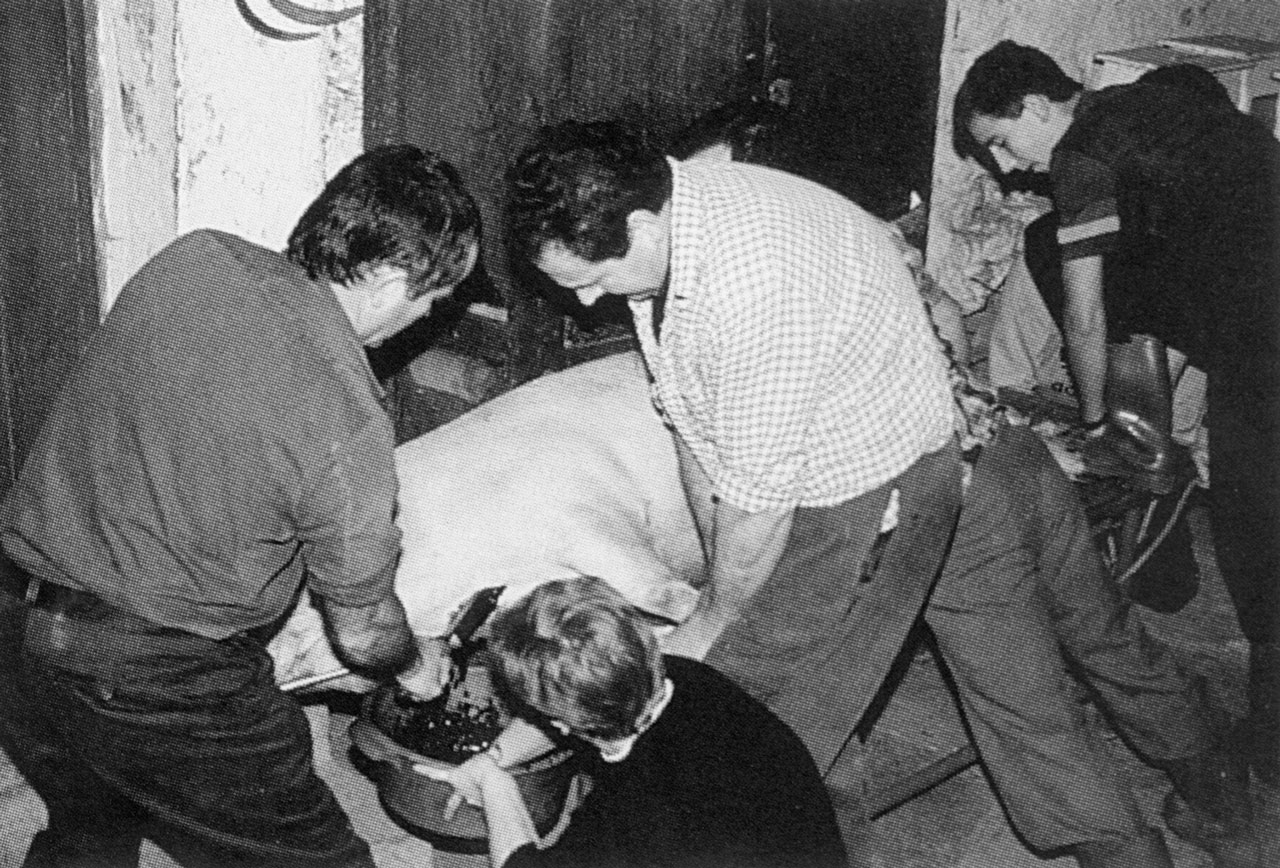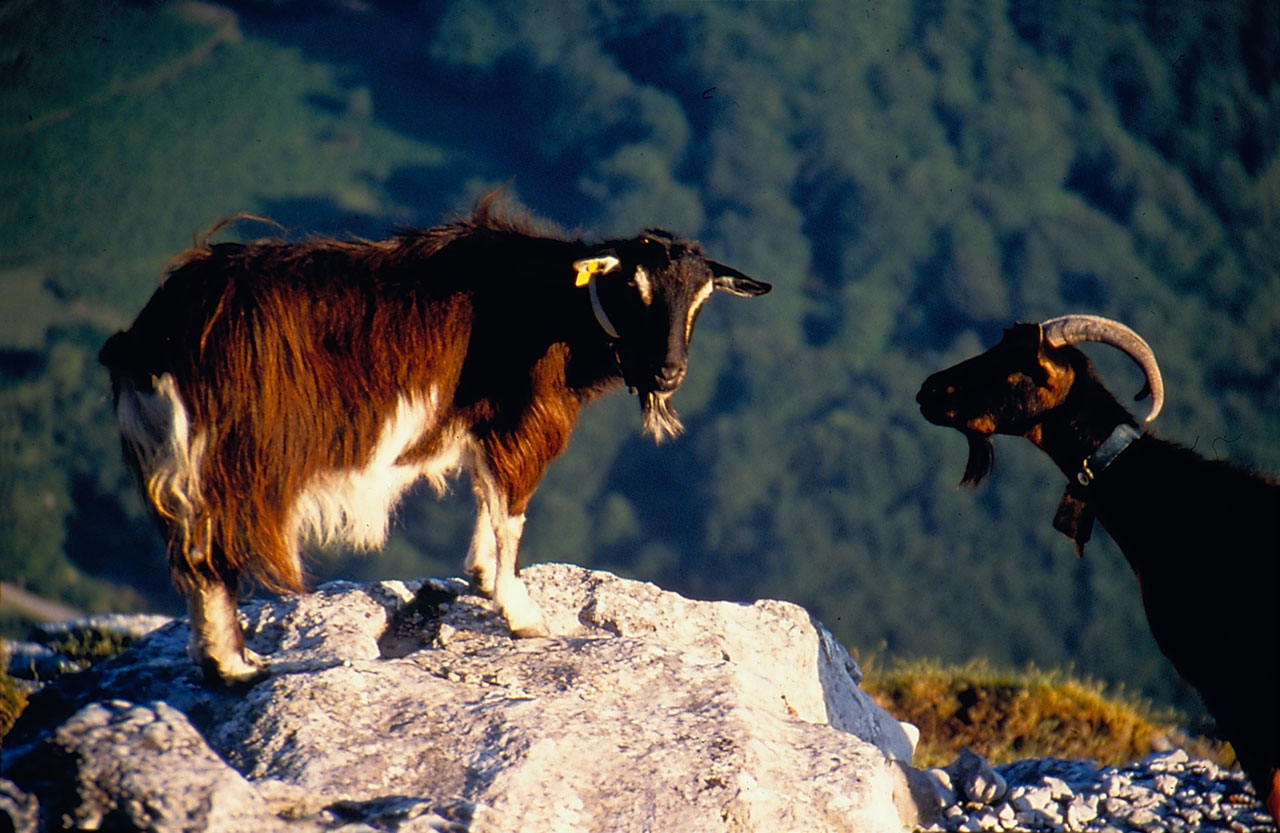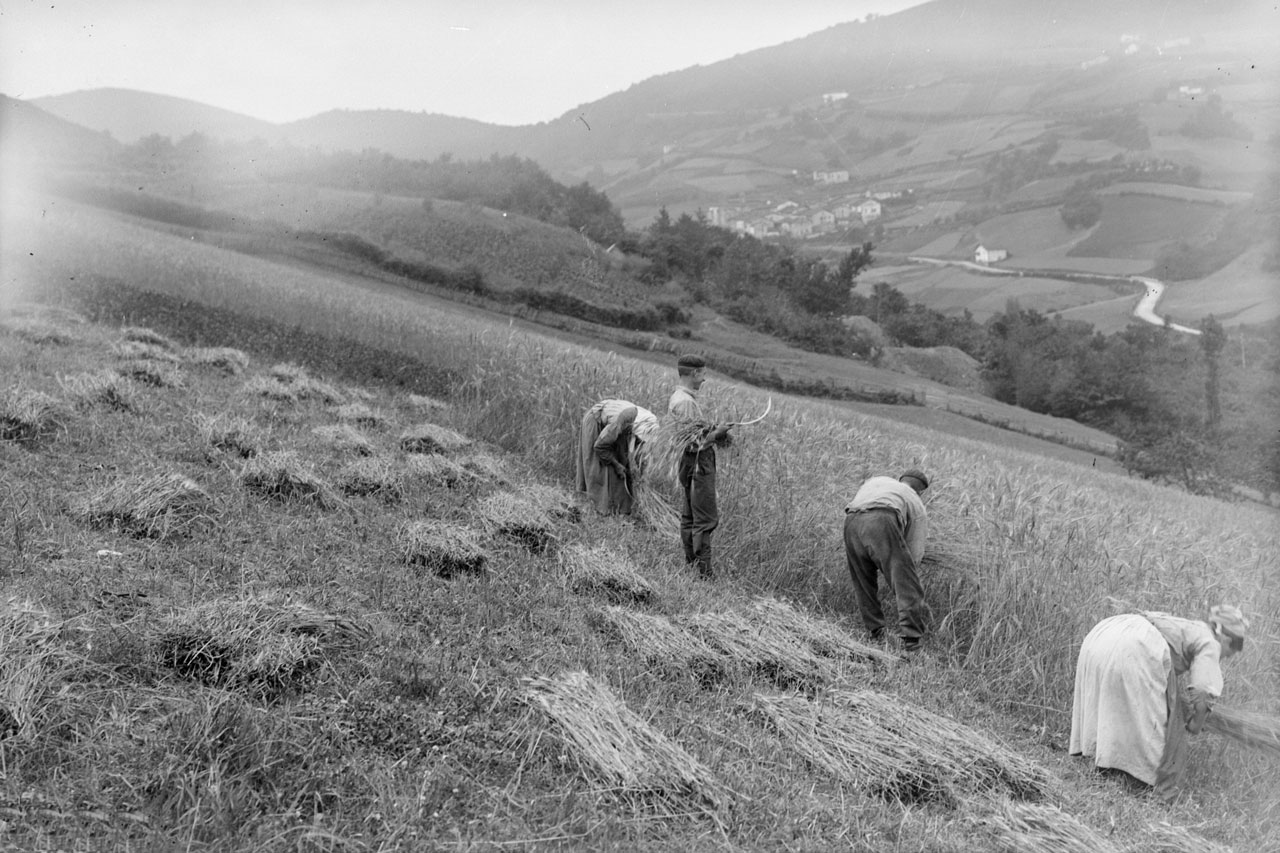Diferencia entre revisiones de «Main Page/en»
De Atlas Etnográfico de Vasconia
| Línea 52: | Línea 52: | ||
====[/atlas/casa/Senar-emazte-zaharrak-eta-gazteak-matrimonios-mayor-y-joven-Areatza-principios-del-siglo-20.jpg|Old and young husband and wife. Areatza (B), beginning of the 20th century. Source: Rubén de Las Hayas’ private archive.|The aim was to ensure that the family wealth, taken to be the farmstead and its belongings, would be passed on in full or only slightly diminished, and improved if possible, from parents to their offspring.||ENLACE]==== | ====[/atlas/casa/Senar-emazte-zaharrak-eta-gazteak-matrimonios-mayor-y-joven-Areatza-principios-del-siglo-20.jpg|Old and young husband and wife. Areatza (B), beginning of the 20th century. Source: Rubén de Las Hayas’ private archive.|The aim was to ensure that the family wealth, taken to be the farmstead and its belongings, would be passed on in full or only slightly diminished, and improved if possible, from parents to their offspring.||ENLACE]==== | ||
| − | ===[alimentacion| | + | ===[alimentacion|Family Diet in the Basque Country|/atlas/alimentacion.png|Food and eating habits in the family, ritual meals, celebrations and lifestyles.]=== |
| − | ====[Alimentacion_domestica_en_vasconia | | + | ====[Alimentacion_domestica_en_vasconia | Family Diet in the Basque Country]==== |
| − | ====[/atlas/alimentacion/Odol-usten.jpg| | + | ====[/atlas/alimentacion/Odol-usten.jpg|Pig bleeding. Source: José Zufiaurre, Etniker Euskalerria Groups.|''Odolosteak ordeaz.''<br /><br /> Neighbours and relatives are given black puddings and other pork cuts as a gift at pig slaughter time. It is an act of courtesy, an expression of the close bond shared with them, and part of an established exchange ritual.|]==== |
| − | ====[/atlas/alimentacion/Erraria-hornada-de-pan-Caserio-Ariztimuno-Onati-1995.jpg| | + | ====[/atlas/alimentacion/Erraria-hornada-de-pan-Caserio-Ariztimuno-Onati-1995.jpg|Bread baking. Ariztimuño Farmhouse. Oñati (G), 1955. Source: Antxon Aguirre, Etniker Euskalerria Groups.|Ogi erre berri, etxe galgarri. <br />''Soft bread at home, an unruly household.''|]==== |
| − | ====[/atlas/alimentacion/Labartoa.jpg| | + | ====[/atlas/alimentacion/Labartoa.jpg|Bushel of maize grain. Source: Ander Manterola, Etniker Euskalerria Groups.|Maize, introduced in the 17th century, and potatoes, in the 19th, would revolutionise the Basque diet.|]==== |
====[/atlas/alimentacion/Dando-brillo-al-pan.jpg|Dando brillo al pan. Fuente: Ander Manterola, Grupos Etniker Euskalerria.|Nolako irina, halako ogia. | ====[/atlas/alimentacion/Dando-brillo-al-pan.jpg|Dando brillo al pan. Fuente: Ander Manterola, Grupos Etniker Euskalerria.|Nolako irina, halako ogia. | ||
Revisión del 12:30 27 ene 2020
Old and young husband and wife. Areatza (B), beginning of the 20th century. Source: Rubén de Las Hayas’ private archive.
House and Family in the Basque Country


House and Family in the Basque Country
The aim was to ensure that the family wealth, taken to be the farmstead and its belongings, would be passed on in full or only slightly diminished, and improved if possible, from parents to their offspring.
Family Diet in the Basque Country


Family Diet in the Basque Country
Odolosteak ordeaz. Neighbours and relatives are given black puddings and other pork cuts as a gift at pig slaughter time. It is an act of courtesy, an expression of the close bond shared with them, and part of an established exchange ritual.
Asto-astoka. Zeanuri (B), 1920. Fuente: Archivo Fotográfico Labayru Fundazioa: Fondo Felipe Manterola.
Juegos infantiles en Vasconia


Juegos infantiles en Vasconia
Arre-arreka —Arre, arre, mandako, bihar Tolosarako, etzi Panplonarako. —Handik zer ekarriko? —Zapata ta garriko.
Medicina popular en Vasconia


Medicina popular en Vasconia
Zantiratu, zan urrutu, zana bere lekuan sartu.Fórmula para la curación de torceduras
Ritos del nacimiento al matrimonio en Vasconia


Ritos del nacimiento al matrimonio en Vasconia
Se prendían amuletos, kutunak, de la ropa de los niños para protegerlos del mal de ojo.
Ritos funerarios en Vasconia


Ritos funerarios en Vasconia
La muerte era un acontecimiento que normalmente tenía lugar en el ámbito de la vecindad, hecho que otorgaba a la casa mortuoria un intenso protagonismo.
Cabras con cencerros. Anboto (B), 1999. Fuente: Archivo Fotográfico Labayru Fundazioa: José Ignacio García.
Ganaderia y pastoreo en Vasconia


Ganaderia y pastoreo en Vasconia
Se ha atribuido al cencerro, al igual que a las campanillas, la virtud de alejar los maleficios que traen desgracias al ganado. Su uso para preservar del aojo, begizkoa, fue antaño muy general.
Agricultura en Vasconia


Agricultura en Vasconia
Satsitu ta jorratu ta garia hartu. Estercolar y escardar y recoger trigo.








